- Learning time
- 5 minutes
- First play time
- 30 minutes
Animals on Board
Designed by: Ralf zur Linde,Wolfgang Sentker
In Animals on Board everyone is hoping to fill their arks up with herds of animal tiles, but beware: if you finish the game with only two of any animal, Noah takes them for his ark instead!
There are sixty animal tiles, made up of twelve sets of five matching animal types. Players begin the game with one animal tile on their ark (secret from the other players) and one food crate. A selection of animal tiles are laid centrally (how many depends on the player count) and on your turn you have two choices: you can split, or load. Splitting means splitting a group of animal tiles into two groups. A single tile counts as a group in this scenario, so you can separate one animal if you like, or more. When you split, you take a food crate from the general supply for yourself.
If you choose to load you must take all the animals in a single group, paying exactly one food crate per animal in that group. These get added to your ark, and your involvement in the current round is finished. As soon as there is only one active player left (i.e. everyone else has loaded) he or she gets one last turn, before a new round begins: any groups left in the middle of the table converge into one big group again, and more tiles are added.
The game finishes at the end of a round when at least one player has ten or more animals, at which point anyone with two of the same type of animal loses them, as they are taken by Noah. If anyone still has more than ten animals, they must discard down to ten. Then single tiles score the point value on them (between 1-5) and sets of three or more tiles score 5points per tile, no matter what number point value they have. Any food crates in your personal supply are also worth a point.
Joe says
The cute artwork and (slightly overproduced, perhaps?) cardboard arks set up the expectation of a gentle game experience, but Animals on Board can be played with the intention of spoiling your opponents plans, and is probably at its best that way. The only downside might be that if you really want to make the best choices, the attention needed might make the game outstay it's welcome, a little bit. But it's a neat little game, and a lot of fun.
The guru's verdict
-
Take That!
Take That!
It's more feisty than it first appears. If someone knows you're after Tigers, for instance, you can bet they're going to split the tigers up so you can't pick up more than one!
-
Fidget Factor!
Fidget Factor!
Exceedingly low. It's a short game that plays pretty quickly.
-
Brain Burn!
Brain Burn!
Low. The aim is set-collection, and really any light cognitive burning is about how to best mess with your opponents' plans.
-
Again Again!
Again Again!
Not a game with a lot of variety, but the tiles come out randomly - you can gamble on getting a third hippo, for instance, only the end up with a pair of them - and the game doesn't out-stay its welcome.

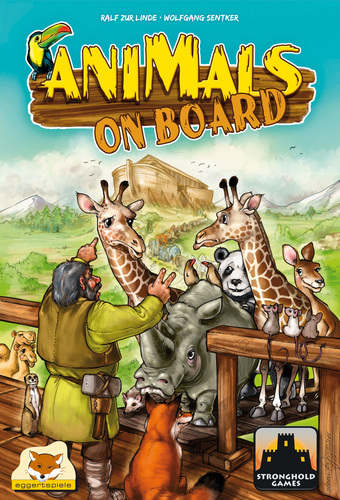

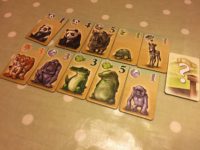
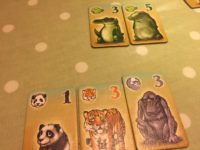
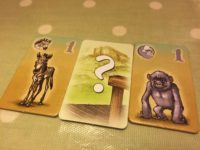
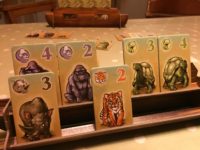
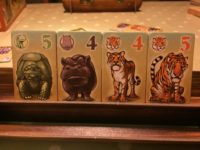


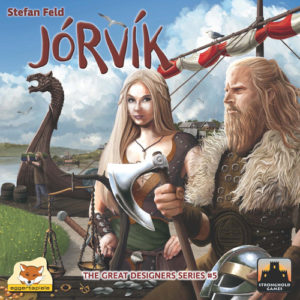
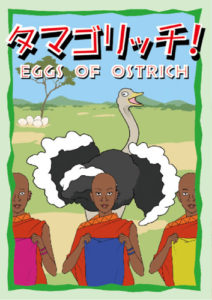
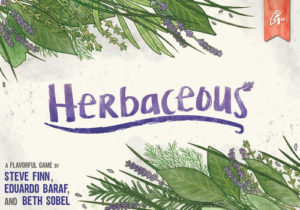
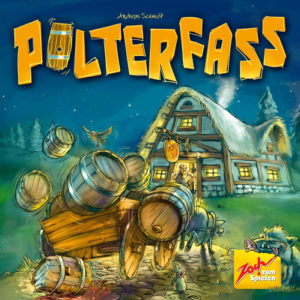

Sam says
The slight element of you-split/I-take (occasionally used in our house to avoid cake-related arguments) reminds me of the games Mammut and New York Slice, where the spoils of the hunt (Mammut) or a pizza (New York Slice) are divided up by the players before being shared. But although it's pitched at a younger audience, I think Animals on Board has the edge on both of them: it's deliciously simple but (thanks to everyone's secret starting tile, and the fact one tile is face-down in each round) has just enough hidden knowledge to keep everyone guessing until the final count-up. And I like the fact it can be played as a simple set-collection game, or as a vicious (set-destruction?) game, where you focus on ripping apart the groups the other players are after.